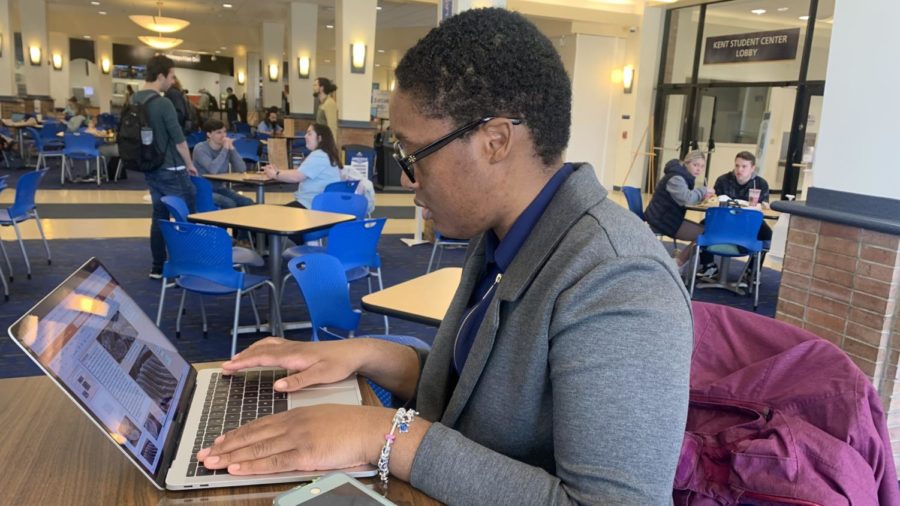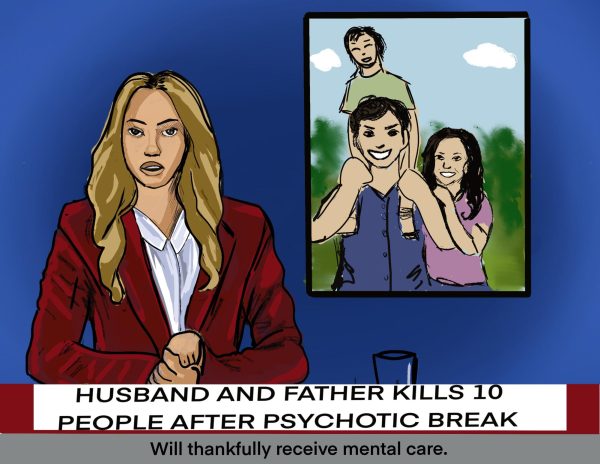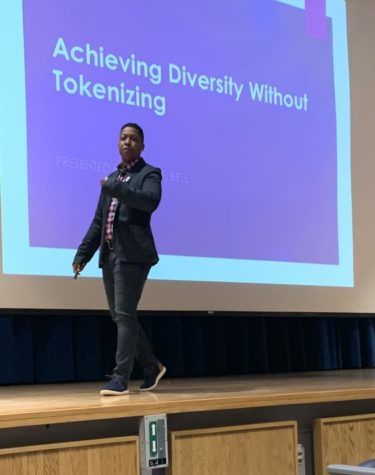Redefining ADHD – Black students discuss life with the disorder
Attention-deficit hyperactivity disorder, also known as ADHD, is a mental disorder that inhibits certain parts of the brain from paying attention. It’s one of the most common mental disorders amongst children. Symptoms of ADHD include distraction, poor time management, disorganization, irritability, and the inability to stay still.
Inattention affects the child’s ability to remember important tasks, due dates or lessons taught in the classroom. Therefore, the child’s grades will suffer. This may lead to children becoming frustrated due to them being distracted or overstimulated.
Behavior interpreted as ADHD in white children is often mislabeled as aggressiveness in Black children, studies indicate, replacing needed support with punishment.
Black children are two and a half times more likely to be diagnosed with conduct disorder than they are ADHD. Conduct disorder is characterized by a pattern of aggressive behavior that causes harm and destruction to the lives of others, including their families and themselves.
Symptoms of conduct disorder vary depending on the severity and are categorized into four spectrums: aggressive behavior, destructive behavior, deceitful behavior, and violation of the rules.
Dr. Angela Neal-Barnett, a clinical psychologist and professor of psychological sciences at Kent State, has seen the disparity in her practice.
“Black children, particularly Black male [children], get the most severe diagnosis. That’s because that deals with how we see Black children and how we tend to use adultification bias,” she said.
Adultification bias is a form of racial prejudice that causes children of color to be perceived as older and more mature than they actually are. This contributes to Black kids receiving less empathy than their white peers. Prejudices like these are influenced by negative stereotypes in the media.
“We have to understand that America is a segregated society,” Barnett said. “Most of us grew up in neighborhoods where everybody looks like us. So we have no face-to-face familiarity with people of different races. Therefore, we are left to base what we think we understand about a different race from the media.”
A 2021 study of 250,000 children diagnosed with ADHD found that Asian, Black and Hispanic children were significantly less likely to be diagnosed with ADHD compared with the diagnosis rates of white children. Those white children were more likely to receive treatment.
Children who are diagnosed with ADHD qualify for an Individualized Education Program (IEP), which is meant to help them. But even with an IEP, these disparities continue to serve as a disadvantage for Black children.
Zavien Parker, a senior communication studies major, remembers there significant differences between him and his white counterparts when he was in grade school. Diagnosed with ADHD when he was in third grade, he was put into an IEP in fifth grade where he got extra help twice a week.
“In third grade, my special ed teacher would give [more favoritism] to the white girls when we all ate lunch together,” he said. “[It got] to the point that he told me I didn’t have to come anymore. I felt abandoned and sad.”
Socioeconomic status and racial segregation are also contributing factors to the underrepresentation of ADHD diagnoses in Black children. This means Black children are less likely to have access to quality mental health services, leaving their learning needs unmet.
In the United States, 72 percent of teachers are white. Consequently, Black students being taught by someone who does not come from the same racial group can lead to cultural discrepancies.
Kennedi Combs, a senior journalism major, went to a predominantly white Catholic school and was the only Black student in her class. Diagnosed with ADHD when she was seven years old, she remembers how harshly her teachers treated her compared to the other students in her class.
“I definitely feel like I got in more trouble [because I was] neurodivergent and my mind worked differently than the other students,” she said. “They were harsher towards me and I feel like [being Black and neurodivergent] were connected.”
Educators have a significant impact on the lives of students. It is important for them to address the systemic issues in education and understand how ADHD affects students and their learning differences.
Theopolis Washington, a graduate student studying in special education, grew up having an IEP. During his time in those classes, he felt there was a lack of understanding between the teachers and the students.
“Education is a white woman dominated field,” said Washington. “So, of course, if they’re the ones implementing a curriculum, they don’t know.”
To close the large gap in ADHD diagnosis, stigmas and biases against Black children will have to be acknowledged to improve their experiences with their diagnoses and to receive the proper resources to be accurately diagnosed.
If you are a Black student at Kent State struggling with ADHD, you can connect with Student Accessibility Services (SAS) for support.
Your donation will support the student journalists of Kent State University - Uhuru Magazine. Your contribution will allow us to purchase equipment and cover our annual website hosting costs.






